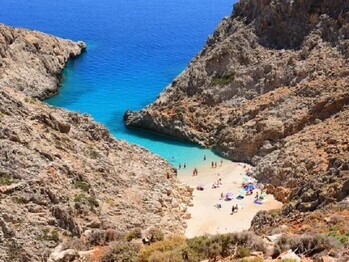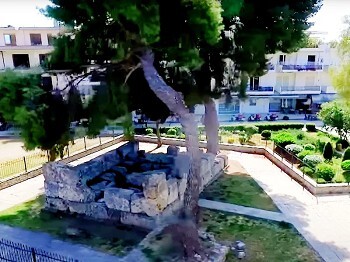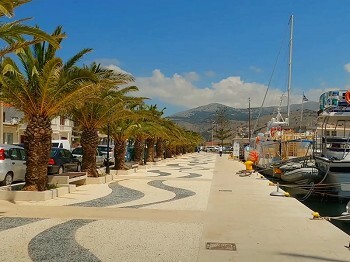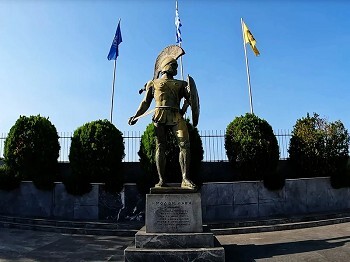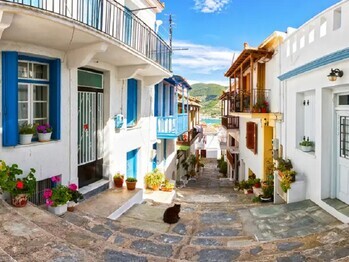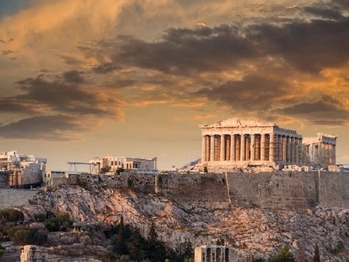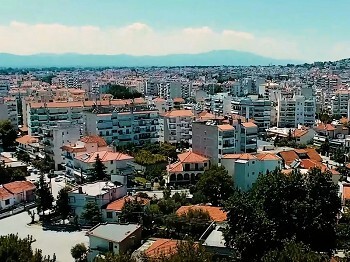Just a stone's throw away from the bustling streets of downtown Athens and the constant hustle and bustle of the pedestrians, Plaka emerges as a sanctuary, inviting visitors to immerse themselves in its charming alleys or unwind at one of its quaint cafés.
Especially on pleasant days, the streets of this Athenian quarter offer a kaleidoscope of people meandering in a summery, vacation-like ambiance.
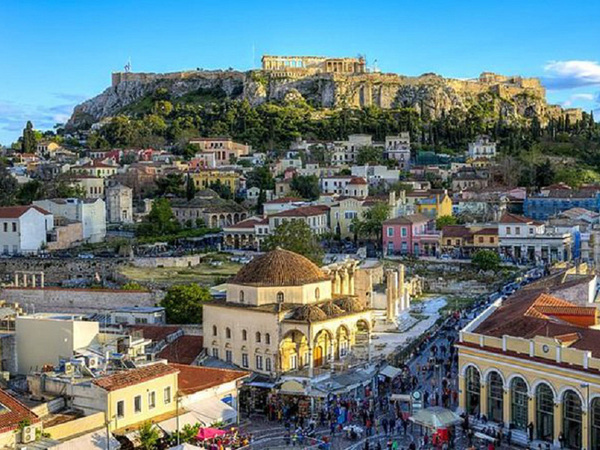
The Anafiotika neighborhood, originally established by craftsmen who migrated from the island of Anafi to aid in the Acropolis excavations, stands as a Cycladic oasis amidst the urban landscape of Athens. With its neoclassical residences, modest dwellings featuring small inner courtyards scented with lemongrass and basil, and above all, the intimate human connections within this tight-knit community, visitors are sure to depart with lasting memories.
Andrianou Street, bustling with commerce, the scattered Byzantine churches harmonizing with natural fragrances, the tantalizing aromas wafting from the eateries along Mnisikleous Street leading to the Acropolis, the cozy nightspots lining Tholou Street, and the Old University, now housing the Museum of Education - each holds its own allure and charm.
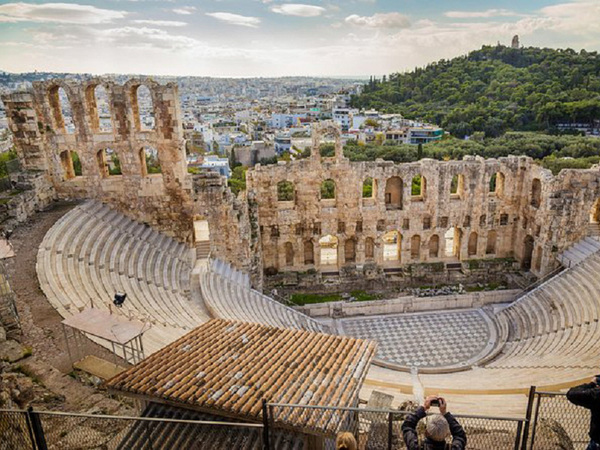
Another notable thoroughfare nearby, Cydathenaeon Street, pays homage to the ancient Cydathenaeon quarter of Athens. Today, it is home to the bustling Filomossou Eterias Square, boasting an array of cafés, ouzo bars, and snack bars.
Panos Street guides visitors to the Roman Agora, the Tower of the Winds, and a 17th-century Turkish seminary repurposed as a prison post-War of Independence. It also hosts the Folk Instrument Museum, enriching the cultural tapestry of the area.
Venturing further, one encounters another divine neighborhood, Monastiraki, situated at the terminus of Pandrossou Street. Deriving its name from the "Great Monastery," formerly Kaisariani Monastery in the Middle Ages, Monastiraki boasts a bustling flea market sprawling from Ayiou Filipa Square to Ermou Street and beyond, evoking the ambiance of an Eastern bazaar.
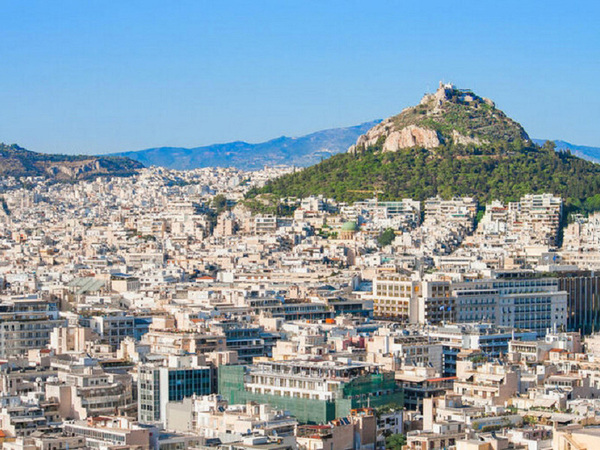
At Avissinias Square, amidst the eclectic array of goods, discerning patrons may stumble upon genuine antiquities showcased in shop windows, on open-air stalls, or even strewn across the ground, weather permitting. Some afternoons, wandering minstrels add a touch of romance to the ambiance. Alongside antiques, one finds establishments vending hardware, furniture, ceramics, textiles, leatherwares, and myriad souvenirs, each bearing a tale of its own.
Some of these establishments, weathered by time, serve as poignant reminders of bygone eras, preserving the essence of an area steeped in centuries of mercantile tradition.
Adjacent to Plaka, the Psiri quarter has undergone rapid evolution in recent times, emerging as a cultural nucleus for the surrounding locale, adorned with avant-garde theaters reflecting the ingenuity and passion of their creators. Here, amid the labyrinthine streets of Plaka and Monastiraki, life unfolds at a leisurely, timeless pace.
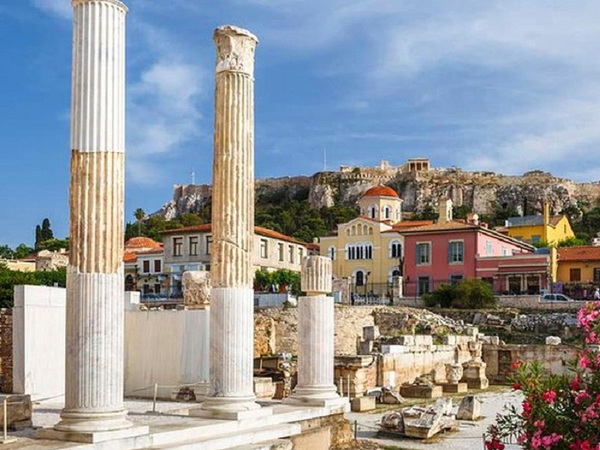
Transportation Options:
By Sea: Athens maintains connections with the islands of the Saronic Gulf and the Cyclades via ports such as Piraeus, Rafina, Lavrio, and Oropos, with buses linking these ports to the city center.
By Air: The Athens International Airport Eleftherios Venizelos, situated approximately 35 kilometers from the city center, is accessible via Attiki Odos, Vari-Koropi Avenue, and the Proastiakos train, providing seamless connectivity to the city and its environs. For further information and related resources, visitors can refer to the airport's official website at www.aia.gr.
Bus and Trolleybus Services: The Athens Urban Transport Organization (OASA) operates a fleet of approximately 350 buses and trolleybuses, servicing the greater Attica region. The network comprises nearly 20 primary routes originating from the city center, supplemented by local routes within municipalities. Trolleybuses ply the central precincts of Athens and Piraeus.
Within Athens, travelers can avail themselves of various modes of transportation, including taxis, OASA buses, the Metro, the Tram, and the Suburban Railway (Proastiakos).
PLEASE INSERT THIS SECTION UNDER SARONIC ISLANDS:
Accessing the Islands:
Visitors can reach Aegina, Angistri, Poros, Hydra, or Spetses by boat or ferry departing from Piraeus, with speedboat options also available for expedited travel.
In addition to its primary harbor, Aegina features two auxiliary ports, Souvala and Ayia Marina, accessible directly from Piraeus by boat or speedboat. Connections between Aegina and Angistri are available daily, with increased frequency during the summer months. Poros can be reached by car via the National Road to Corinth, then following the Isthmus-Epidaurus-Galatas route, with regular ferry services operating to and from the island.
Spetses can be accessed by road, following the aforementioned route and diverging after Nea Epidavros onto the new road leading to Koliaki, Kranidi, and Kosta, situated opposite Spetses. Private vehicles are prohibited on Spetses, akin to Hydra, necessitating travelers to leave their vehicles on the mainland.
Salamis is reachable by boat, with frequent sailings from Piraeus during the summer season, while year-round ferry connections link Perama to Paloukia on Salamis.
Public Transportation:
Local buses serve routes traversing all the Argosaronic islands, with the exception of Hydra.

